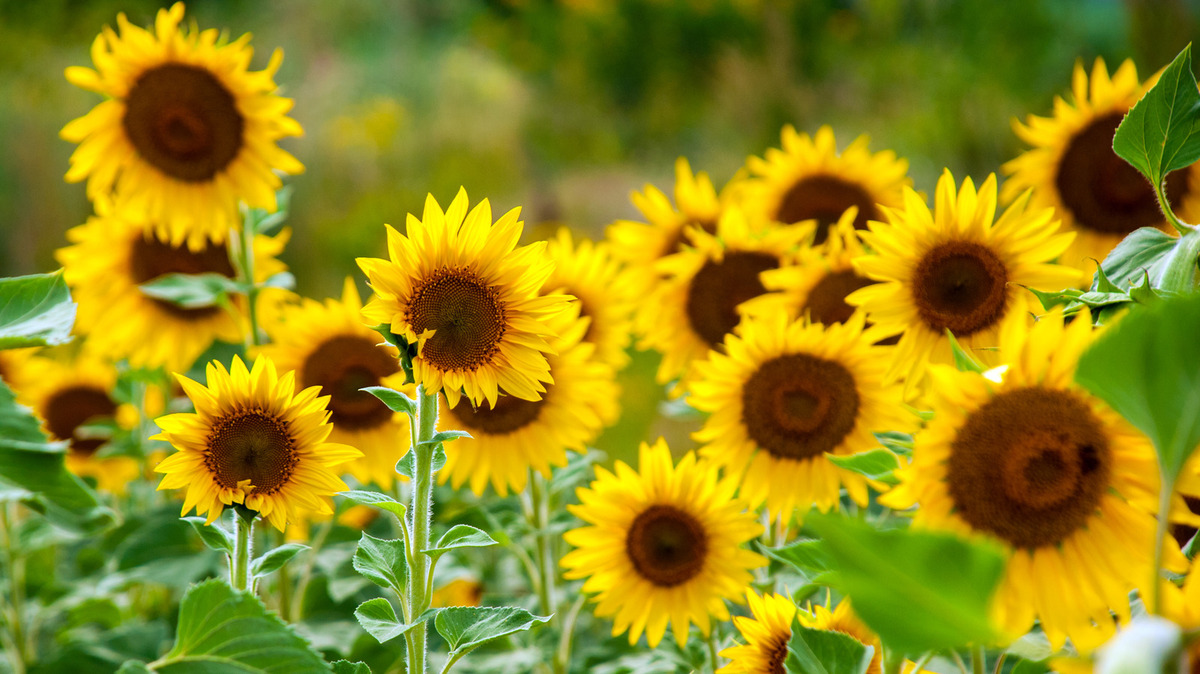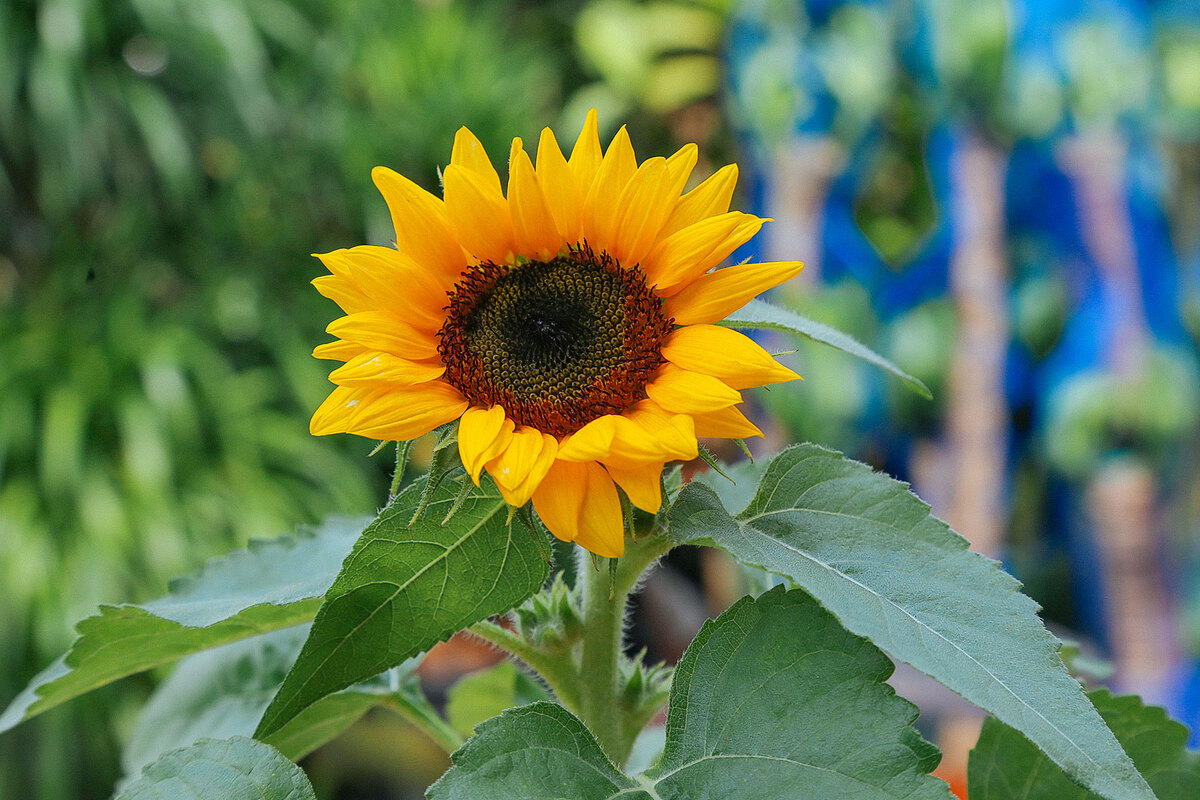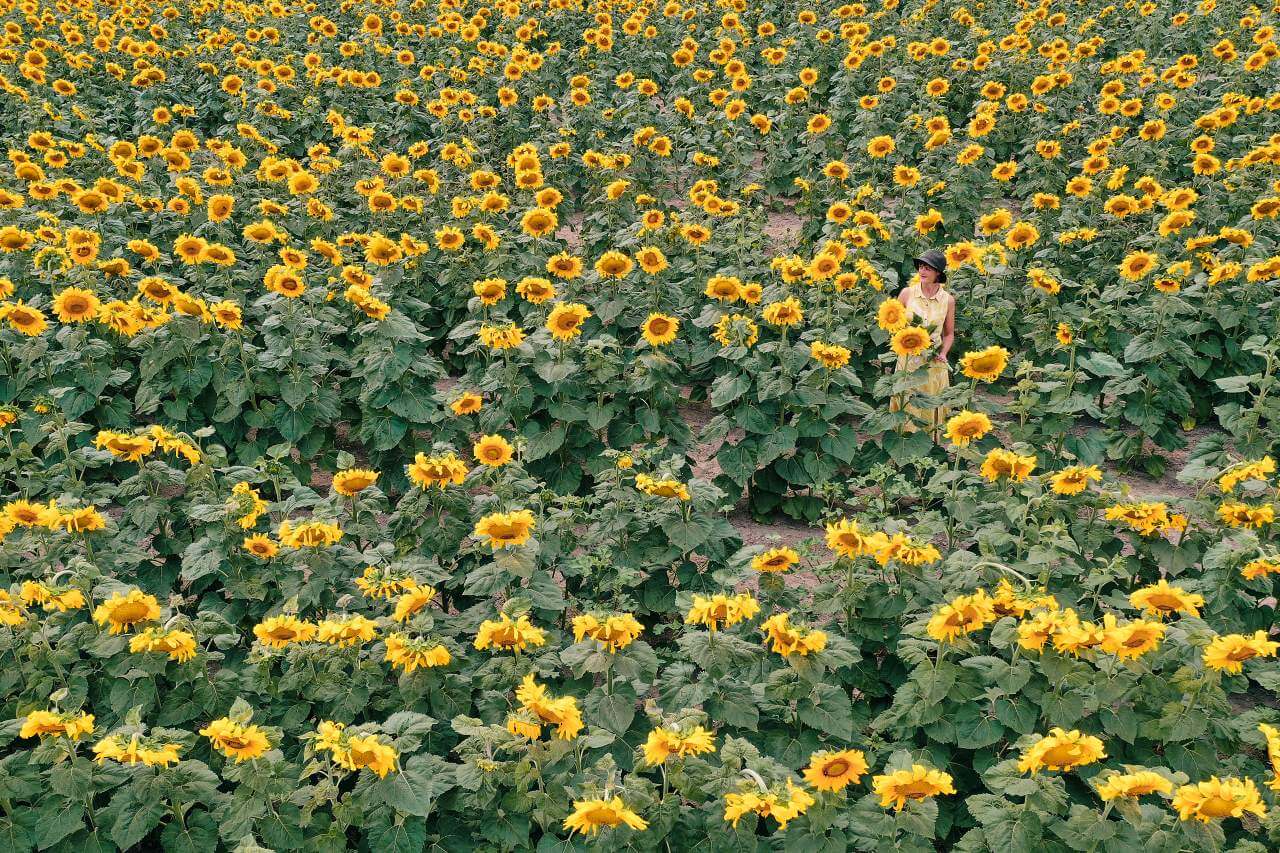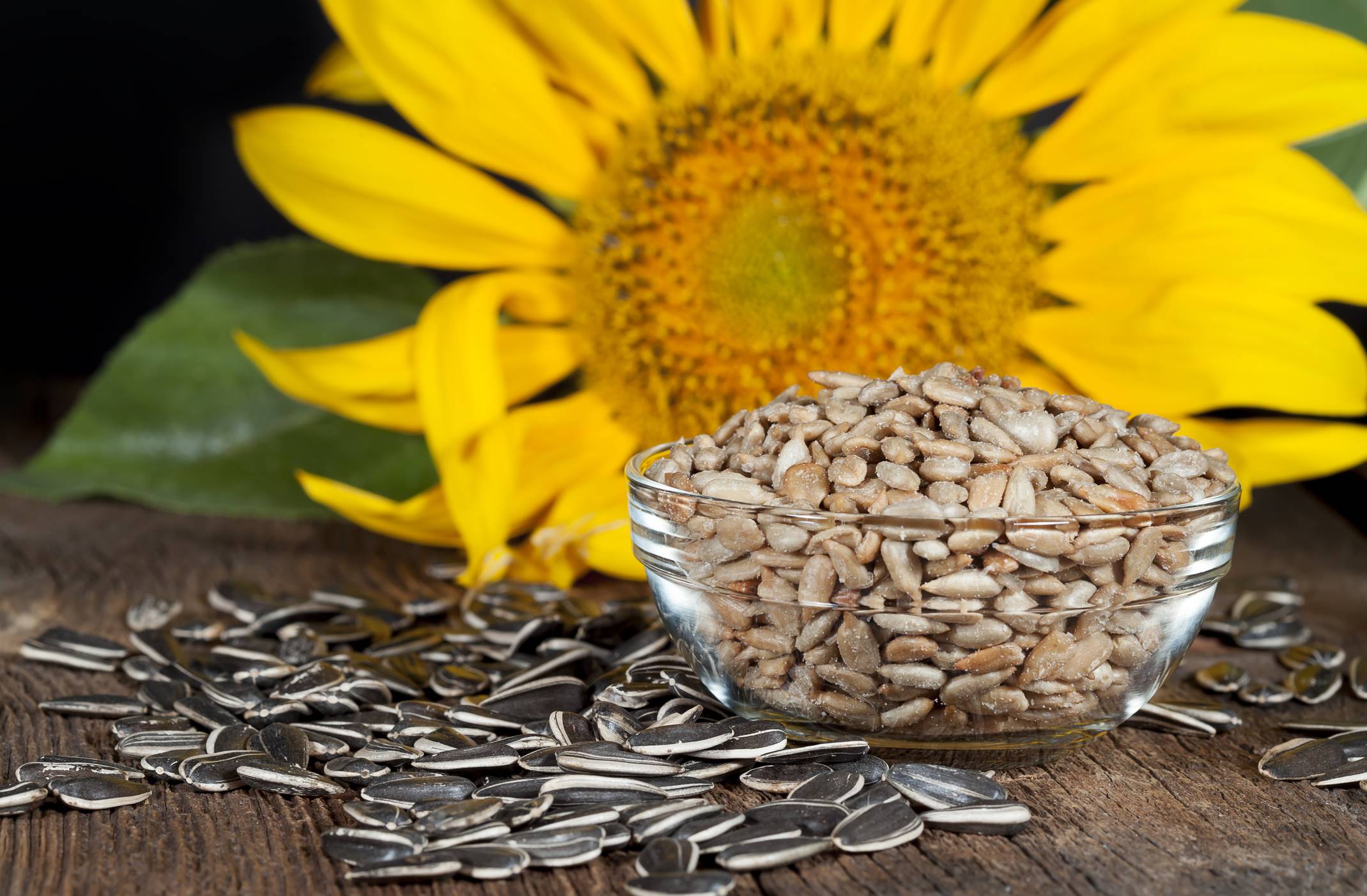Home>Types of Gardening>Ornamental Gardening>When To Plant Sunflowers In Alabama
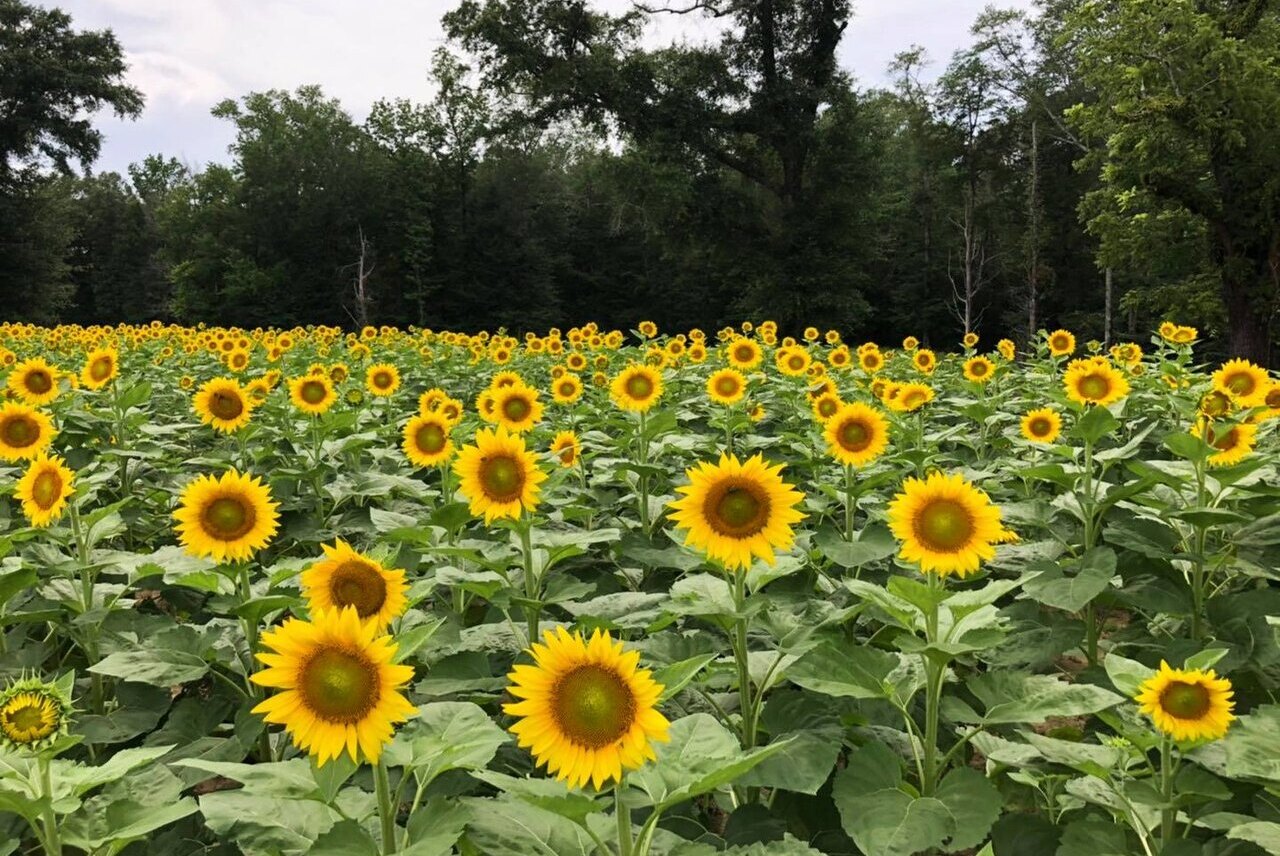

Ornamental Gardening
When To Plant Sunflowers In Alabama
Modified: January 22, 2024
Find out the best time for planting sunflowers in Alabama to enhance your ornamental gardening with these helpful tips and guidelines.
(Many of the links in this article redirect to a specific reviewed product. Your purchase of these products through affiliate links helps to generate commission for Chicagolandgardening.com, at no extra cost. Learn more)
Table of Contents
Introduction
Welcome to the vibrant world of sunflowers, where nature's golden beauties grace the Alabama landscape with their radiant presence. Sunflowers, with their resplendent blooms and versatile uses, hold a special place in ornamental gardening. Whether adorning garden beds, lining pathways, or accentuating the beauty of floral arrangements, these cheerful blooms captivate the hearts of gardening enthusiasts and nature lovers alike.
In this guide, we will delve into the art of cultivating sunflowers in the unique climate and soil conditions of Alabama. From understanding the state's specific environmental factors to mastering the art of planting, nurturing, and harvesting sunflowers, this comprehensive resource will equip you with the knowledge and skills to embark on a successful sunflower gardening journey.
Join us as we explore the best practices for planting and caring for these iconic flowers in the heart of Alabama, where the warm sun and fertile soil create an ideal canvas for cultivating these stunning botanical marvels. Whether you're a seasoned gardener or a novice enthusiast, the allure of sunflowers is bound to inspire and enrich your ornamental gardening endeavors. So, let's embark on this horticultural adventure and unlock the secrets to thriving sunflower cultivation in the enchanting state of Alabama.
Climate and Soil Conditions in Alabama
Alabama’s diverse climate and soil conditions play a pivotal role in shaping the ideal environment for cultivating sunflowers. The state experiences a humid subtropical climate, characterized by hot summers and mild winters. The average annual precipitation ranges from 55 inches in the northern regions to 67 inches in the southern coastal areas, providing ample moisture for plant growth.
When it comes to soil, Alabama boasts a rich tapestry of soil types, including sandy loams, clay loams, and fertile alluvial soils. The state’s soil composition is influenced by its topography, with the coastal plains featuring sandy soils and the upland regions comprising clayey and loamy soils. These diverse soil profiles offer a spectrum of options for cultivating sunflowers, allowing gardeners to select the most suitable soil type based on their specific location and gardening preferences.
For successful sunflower cultivation, it is essential to consider the soil’s drainage capacity, nutrient content, and pH levels. Sunflowers thrive in well-drained soils with a pH range of 6.0 to 7.5, enabling optimal nutrient uptake and root development. Additionally, the warm climate of Alabama provides favorable conditions for sunflower growth, with the ample sunlight and heat contributing to robust plant vitality and prolific flowering.
Understanding the interplay between Alabama’s climate and soil conditions is crucial for harnessing the full potential of sunflower cultivation. By leveraging the state’s natural attributes and tailoring cultivation practices to suit the local environment, gardeners can nurture thriving sunflower gardens that embody the spirit of Alabama’s bountiful landscapes.
Best Time to Plant Sunflowers in Alabama
Timing is of the essence when it comes to planting sunflowers in Alabama. The optimal window for sowing sunflower seeds in the state aligns with the transition from late spring to early summer, typically spanning from late April to mid-May. During this period, the soil temperature rises to a range of 50 to 60°F (10 to 15.5°C), creating favorable conditions for seed germination and early root establishment.
As Alabama experiences a prolonged growing season, characterized by warm temperatures and ample sunlight, sunflowers have the opportunity to flourish from late spring through the peak of summer. This extended growing period allows sunflowers to develop robust stems, abundant foliage, and vibrant blooms, showcasing their full splendor against the backdrop of Alabama’s picturesque landscapes.
It is important to consider the specific microclimates within Alabama, as the northern and southern regions may exhibit variations in temperature and frost dates. In the northern areas, where the risk of late spring frosts persists, gardeners may opt to delay planting until the frost danger has passed, typically around mid-May. Conversely, the southern coastal regions, with their milder climate, offer an early planting advantage, enabling gardeners to initiate sunflower cultivation as early as late April.
By aligning the planting schedule with the state’s climatic nuances and frost patterns, gardeners can optimize the growth potential of sunflowers and mitigate the risk of cold damage during the critical early stages of plant development. This strategic approach to timing sets the stage for a flourishing sunflower display, ensuring that these iconic blooms grace the Alabama landscape with their radiant presence throughout the summer months.
Steps for Planting Sunflowers
Embarking on a sunflower planting journey in Alabama involves a series of meticulous steps that lay the foundation for robust growth and abundant blooms. From selecting the ideal site to nurturing the emerging seedlings, each phase of the planting process contributes to the successful cultivation of these iconic flowers. Let’s explore the essential steps for planting sunflowers in the heart of Alabama:
- Site Selection: Choose a sun-drenched location with well-drained soil, as sunflowers thrive in full sunlight and require soil that facilitates efficient water drainage. Ensure that the chosen site offers ample space for the sunflowers to spread their roots and receive unhindered sunlight throughout the day.
- Soil Preparation: Prior to planting, prepare the soil by loosening it to a depth of 2-3 inches and incorporating organic matter, such as compost or well-rotted manure, to enrich the soil with essential nutrients. This step promotes optimal root development and sets the stage for vigorous sunflower growth.
- Seed Sowing: Plant sunflower seeds at a depth of 1 to 1.5 inches, spacing them 6 to 18 inches apart, depending on the sunflower variety’s mature size. Ensure that the soil is adequately moist during sowing to support seed germination and early root establishment.
- Watering: After sowing the seeds, gently water the soil to provide moisture for the emerging seedlings. Monitor the soil moisture levels and ensure consistent, moderate watering to support healthy growth without waterlogging the soil.
- Maintenance: As the sunflower seedlings emerge, monitor their progress and provide care as needed. Protect the young plants from potential threats, such as pests and weeds, and consider providing support, such as stakes, for taller sunflower varieties to prevent stem breakage in windy conditions.
- Thinning and Transplanting: Once the seedlings develop several sets of true leaves, thin them to the recommended spacing to allow for optimal air circulation and reduce competition for nutrients. If transplanting seedlings, handle them carefully to minimize root disturbance and ensure seamless acclimatization to their new growing location.
- Fertilization: Consider applying a balanced fertilizer when the sunflower seedlings reach a height of 6-8 inches to bolster their nutrient intake and support robust growth. Follow the recommended application rates and avoid over-fertilization, which can lead to excessive foliage at the expense of flower production.
By meticulously following these steps and tending to the evolving needs of the sunflower plants, gardeners can set the stage for a thriving sunflower display that embodies the vibrancy and natural splendor of Alabama’s ornamental landscapes.
Sunflower Care and Maintenance
Once the sunflowers have taken root in the fertile Alabama soil, diligent care and maintenance practices are essential to nurture their growth and ensure a spectacular display of radiant blooms. From monitoring soil moisture to safeguarding the plants against potential threats, the following guidelines outline the key aspects of sunflower care and maintenance in the Alabama landscape:
- Watering: Consistent and moderate watering is crucial for supporting healthy sunflower growth, especially during periods of inadequate rainfall. Monitor the soil moisture levels and aim to keep the soil evenly moist, avoiding prolonged dry spells that can hinder flower development.
- Weeding: Regularly inspect the sunflower bed and remove any competing weeds that may encroach upon the growing space. By minimizing weed competition, the sunflowers can access essential nutrients and thrive without undue restrictions.
- Pest and Disease Management: Keep a vigilant eye out for common pests, such as aphids and caterpillars, which may target sunflower plants. Employ organic pest control methods or suitable insecticidal treatments to mitigate pest infestations and preserve the health of the sunflowers. Additionally, monitor for signs of fungal diseases, such as powdery mildew, and address any emerging issues promptly to prevent widespread infection.
- Support and Staking: For tall or large-flowered sunflower varieties, providing support in the form of stakes or trellises can prevent stem breakage and maintain the upright posture of the plants, particularly in windy conditions. Secure the plants gently to the supports, allowing flexibility for natural growth while offering essential stability.
- Fertilization: Consider supplementing the soil with a balanced fertilizer during the early stages of sunflower growth to fortify the plants with essential nutrients. Refrain from excessive nitrogen application, as this can lead to excessive foliage growth at the expense of robust flowering.
- Deadheading: Remove spent blooms by deadheading the sunflowers, which encourages the development of new flowers and prolongs the blooming period. Regular deadheading also prevents the formation of seeds, redirecting the plant’s energy towards producing additional blooms.
- Monitoring Growth: Observe the sunflowers as they mature, ensuring that they receive ample sunlight and addressing any signs of stress, such as wilting or discoloration. Adjust care practices as needed to accommodate the evolving needs of the plants throughout their growth stages.
By embracing these care and maintenance practices, gardeners can foster thriving sunflower gardens in the heart of Alabama, celebrating the resplendent beauty of these iconic blooms against the backdrop of the state’s picturesque landscapes.
Harvesting Sunflowers
The culmination of the sunflower cultivation journey in Alabama leads to the rewarding phase of harvesting, where the vibrant blooms yield a bountiful harvest of seeds and ornamental treasures. Harvesting sunflowers involves a series of strategic steps to gather the seeds at their peak maturity and preserve the blooms for ornamental use. Let’s explore the essential guidelines for harvesting sunflowers in the Alabama landscape:
- Seed Maturity: Monitor the sunflower heads as they mature, observing the gradual transformation of the flower disk from a vibrant yellow to a golden brown hue. The back of the sunflower head will also exhibit a noticeable color change, indicating that the seeds are approaching full maturity.
- Seed Sampling: To confirm the readiness for harvest, sample a few sunflower seeds by pressing them gently. Mature seeds will resist indentation and exhibit a firm, plump texture, signaling their suitability for harvest. Avoid harvesting prematurely, as underdeveloped seeds may not reach their full flavor potential.
- Harvesting Technique: When the sunflower seeds have reached optimal maturity, carefully cut the flower heads from the stems, leaving several inches of stem attached. Handle the harvested sunflowers with care to prevent seed damage and preserve the integrity of the blooms for ornamental use.
- Drying Process: Hang the harvested sunflower heads in a well-ventilated, dry area to facilitate the drying process. Ensure that the heads are suspended in a manner that allows adequate air circulation, promoting uniform drying and preventing moisture accumulation that could compromise seed quality.
- Seed Extraction: Once the sunflower heads have dried thoroughly, gently rub the flower disks to dislodge the mature seeds. Collect the liberated seeds and sift them to remove any remaining plant debris, ensuring that the harvested seeds are clean and ready for storage or culinary use.
- Ornamental Preservation: Preserve the sunflower blooms for ornamental enjoyment by drying the flower heads in a well-ventilated, dimly lit area. As the blooms dry, they will retain their striking appearance, allowing you to showcase them in floral arrangements, decorative displays, or craft projects.
- Seed Storage: Store the harvested sunflower seeds in airtight containers, such as glass jars or resealable bags, and place them in a cool, dry location away from direct sunlight. Properly stored sunflower seeds can maintain their quality for several months, ready to be enjoyed as wholesome snacks or utilized in culinary creations.
By following these meticulous harvesting practices, gardeners can savor the fruits of their labor and relish the abundant harvest of sunflower seeds, while also preserving the captivating beauty of sunflower blooms for ornamental appreciation in the enchanting landscapes of Alabama.
Conclusion
As we conclude our exploration of sunflower cultivation in Alabama, we are reminded of the captivating journey that unfolds from the initial planting stages to the bountiful harvest of radiant blooms and wholesome seeds. The unique climate and soil conditions of Alabama provide an ideal canvas for nurturing sunflowers, allowing these iconic blooms to thrive and embellish the ornamental landscapes with their vibrant presence.
By understanding the nuances of Alabama’s climate and soil composition, gardeners can tailor their cultivation practices to harness the full potential of sunflower growth, ensuring that these resplendent flowers grace the state’s gardens and natural settings with their golden splendor. From the careful selection of planting sites to the diligent care and maintenance of sunflower plants, each phase of the cultivation process contributes to the creation of thriving sunflower displays that embody the spirit of Alabama’s horticultural richness.
As gardeners embark on their sunflower cultivation endeavors, they are invited to immerse themselves in the art of nurturing these botanical marvels, celebrating the cycle of growth, from the emergence of vibrant blooms to the harvest of nutritious seeds and the preservation of ornamental treasures. The journey of cultivating sunflowers in Alabama is a testament to the enduring allure of nature’s beauty, inspiring a deep connection with the land and the vibrant flora that graces it.
With each sunflower bloom and harvest, Alabama’s ornamental landscapes are adorned with the timeless elegance of these iconic flowers, enriching the tapestry of natural beauty that defines the state’s horticultural legacy. The cultivation of sunflowers in Alabama is not merely a gardening pursuit; it is a celebration of nature’s resilience, vitality, and the enduring charm of these golden blooms that captivate the hearts of all who behold them.
As we bid farewell to this horticultural odyssey, may the spirit of sunflower cultivation continue to flourish in the heart of Alabama, inspiring gardeners to cultivate thriving sunflower displays and revel in the timeless splendor of these resplendent blooms against the backdrop of Alabama’s picturesque landscapes.
